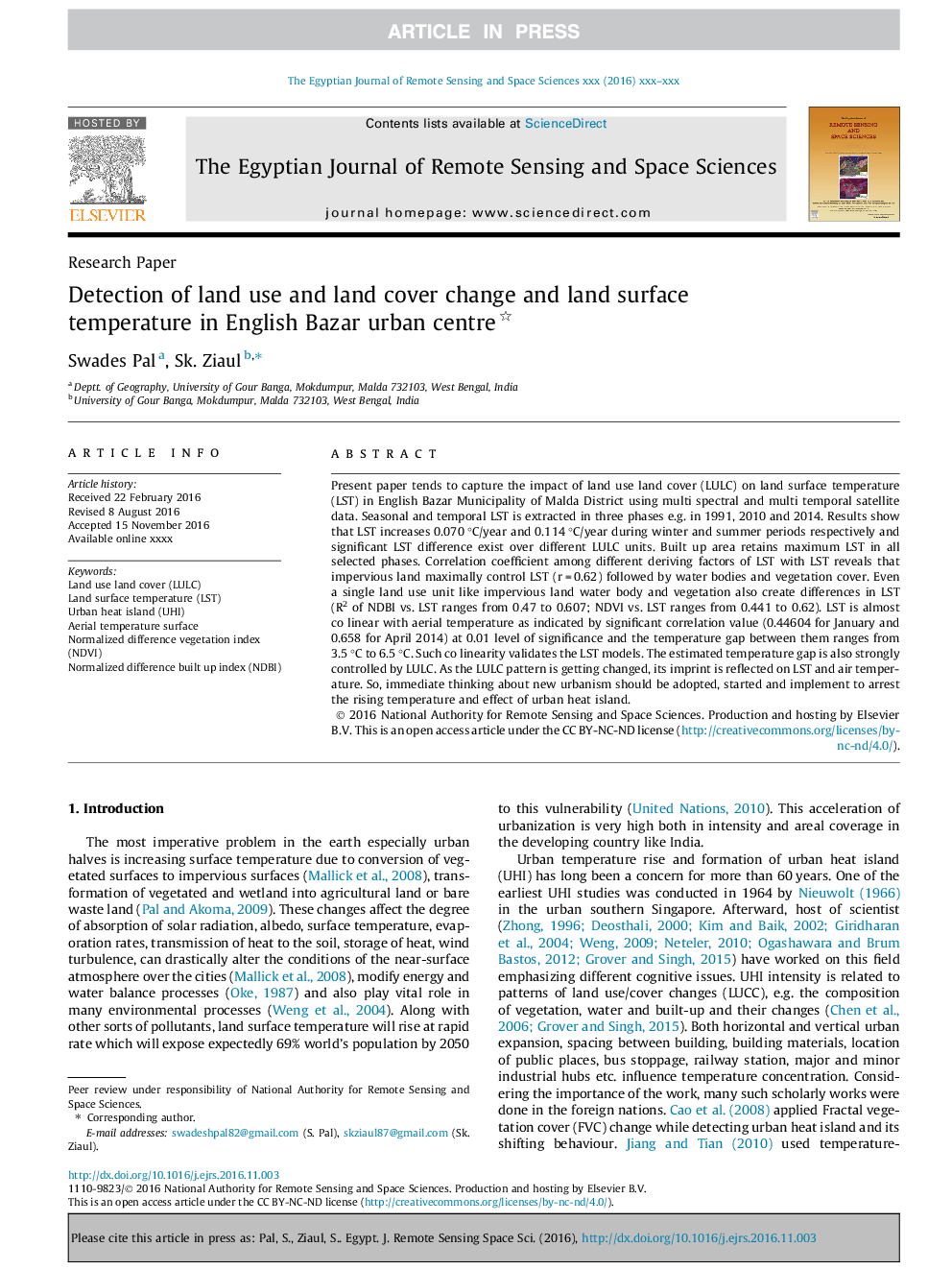| Article ID | Journal | Published Year | Pages | File Type |
|---|---|---|---|---|
| 5780177 | The Egyptian Journal of Remote Sensing and Space Science | 2017 | 21 Pages |
Abstract
Present paper tends to capture the impact of land use land cover (LULC) on land surface temperature (LST) in English Bazar Municipality of Malda District using multi spectral and multi temporal satellite data. Seasonal and temporal LST is extracted in three phases e.g. in 1991, 2010 and 2014. Results show that LST increases 0.070 °C/year and 0.114 °C/year during winter and summer periods respectively and significant LST difference exist over different LULC units. Built up area retains maximum LST in all selected phases. Correlation coefficient among different deriving factors of LST with LST reveals that impervious land maximally control LST (r = 0.62) followed by water bodies and vegetation cover. Even a single land use unit like impervious land water body and vegetation also create differences in LST (R2 of NDBI vs. LST ranges from 0.47 to 0.607; NDVI vs. LST ranges from 0.441 to 0.62). LST is almost co linear with aerial temperature as indicated by significant correlation value (0.44604 for January and 0.658 for April 2014) at 0.01 level of significance and the temperature gap between them ranges from 3.5 °C to 6.5 °C. Such co linearity validates the LST models. The estimated temperature gap is also strongly controlled by LULC. As the LULC pattern is getting changed, its imprint is reflected on LST and air temperature. So, immediate thinking about new urbanism should be adopted, started and implement to arrest the rising temperature and effect of urban heat island.
Keywords
Related Topics
Physical Sciences and Engineering
Earth and Planetary Sciences
Earth and Planetary Sciences (General)
Authors
Swades Pal, Sk. Ziaul,
